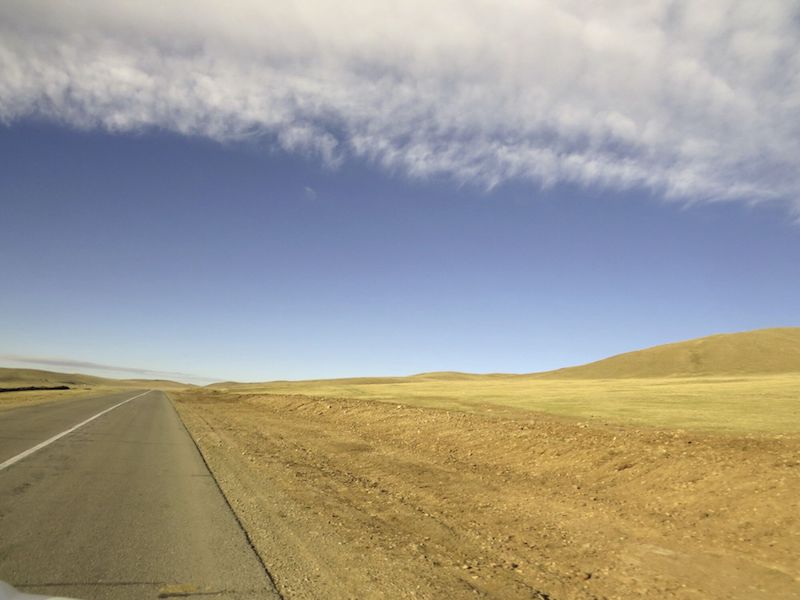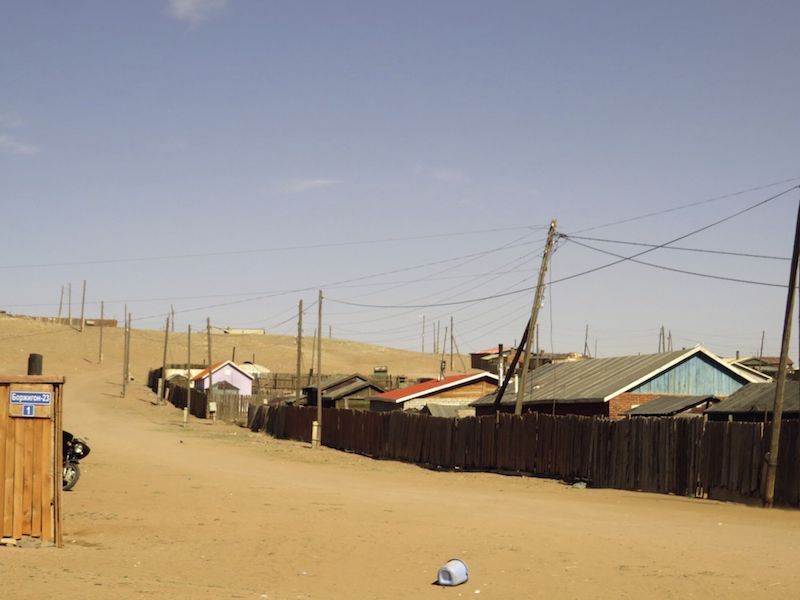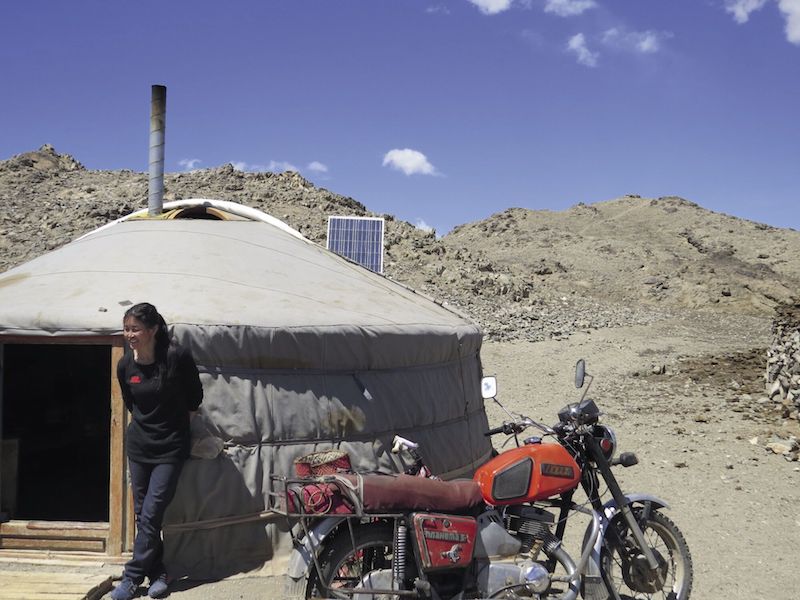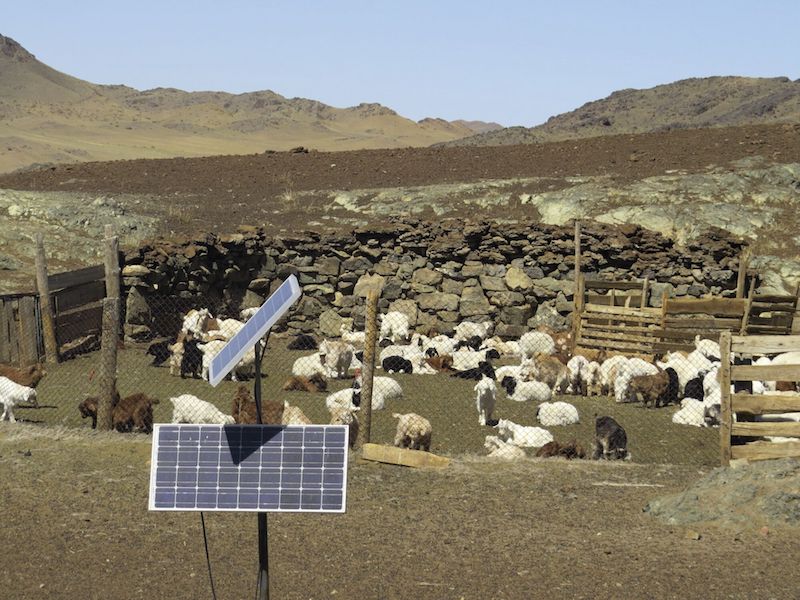Around a third of Mongolians maintain the traditional nomadic lifestyle, living in small family units in round tents – or gers – with their herds of goats, sheep, camels, and horses, far away from settled areas and totally independent of the power grid.
Yet, despite their geographic isolation, Mongolia’s herders are not necessarily cut off from the world. Bayanmunkhiin Ehner, who lives in a ger camp with some 700 goats and sheep near Nomgon Soum in the Gobi Desert, keeps up with the affairs of her family and friends on Facebook – which she accesses on her smartphone – while monitoring prices for cashmere wool through the news she watches on her flat-screen TV. All of this is powered through twin 60 W Chinese-made solar panels, fixed to poles above her ger, which feed into lead-acid batteries (either car batteries or similar batteries produced for storing solar energy).
“We’ve had (the solar power system) for 15 years,” she said in an interview. “The power it provides allows me to get the information that I need.”
In a nearby ger camp, her neighbor Dalaisaikhan says that he switched from a wind power system to solar panels in 2009. “Solar power is very portable – it’s small and easy to carry, while the wind system was very big – you have to stand up a big post and it’s hard to set up,” he said, adding that many Mongolian herders feel that windmills actually generate more dust around the ger.

While the herder lifestyle might seem quaint, it is actually a viable way of life for hundreds of thousands of Mongolians, many of whom are well integrated into the global economy, raising cashmere goats for their valuable wool and other livestock for their meat. Distributed solar power enables these nomads to herd their livestock far out on the steppes and deserts, while maintaining communication with buyers and keeping products such as meat and cheese preserved in freezers.
Off-grid opportunity
Renewable energy advocates tout distributed renewable energy as being more flexible and able to generate power more closely to where it’s consumed, rather than transporting it across long distances. Mongolia, despite lagging in large-scale renewable energy installations, and having a power grid that relies heavily on old coal-fired power plants, has actually enabled strong penetration of decentralized, off-grid solar power.
First introduced to Mongolia in 1999 under the “100,000 Solar Ger” national program, solar panels have been distributed throughout the countryside with the help of grants from Japan, China, and the World Bank. Mongolia has provided 25,000 solar systems to herders around the country, while tens of thousands more herders, including Bayanmunkhiin and Dalaisaikhan, have purchased their own systems.
Yet Mongolia’s potential in solar power extends far beyond solar gers. A land of vast, wide open landscapes and huge skies, Mongolia is blessed with 270-300 sunny days a year, equivalent to some 2,250 to 3,300 hours of sunshine. According to the “Scaling-Up Renewable Energy Program (SREP) Investment Plan for Mongolia,” annual solar radiation is estimated at 1,200 to 1,600 kW per square meter, and intensity at more than 4.3 to 4.7 kW per hour. “More than two thirds of the country receive high levels of incoming solar radiation in the range of 5.5 to 6.0 kWh/m² per day,” the report states. Mongolia may have the potential for 1,500 GW of installed solar PV capacity, as calculated in the report, “Costs and benefits of large-scale deployment of wind turbines and solar PV in Mongolia for international power exports,” published in the journal Renewable Energy by Takashi Otsuki, researcher for the Asia Pacific Energy Research Centre (APERC) at the Institute of Energy Economics Japan (IEEJ).
To develop the sector, Mongolia has begun offering attractive FITs for grid-connected solar at $0.15-$0.18/kWh, and even higher for standalone installations of $0.20-$0.30/kWh.
As a result, Mongolia’s first large-scale solar power plant, located in Darkhan City, approximately 230 km from the capital Ulaanbaatar, began commercial operations on January 1 this year, and the completion ceremony was held on January 19.

Photo: pv magazine/Tim Ferry
The 10 MW Solar Power Project in Darkhan City is a joint project between a local corporation in Mongolia, Japan’s Sharp Corporation, and other local investors. Using Sharp modules installed over an area of nearly 30 hectares, the solar farm is an important source of energy. The World Bank has also announced
$54 million in financing to help Mongolia improve its power grid, including
$12.4 million for a second 10 MW solar farm in the Western Power System grid, which is independent of the Central Power System and must import 70% of its power needs. These are all important steps, but Mongolia needs to do more to increase its use of solar power.
A role to play
The country is aiming for a 14% reduction in greenhouse gas emissions by 2030 compared to “business as usual” (BAU), as part of its Intended Nationally Determined Contributions (INDC) as per the Paris Climate Change Agreement. According to the Climate Policy Team of the World Bank Group in its report detailing Mongolia’s INDC, Mongolia is going to reduce its emissions in part by generating 20% of its power needs from renewables such as hydro, wind, and
145 MW of solar PV, at a cost in 2015 of $573 billion, although this price has undoubtedly fallen since then. The government further states it wants to see renewables at 30% of generation by 2030.
As of October 2014, Mongolia’s total installed capacity for power generation from all sources stood at 1.09 GW, 90% of it in CHP (combined heat and power) coal-fired plants, with 2% in hydroelectric, 2% in diesel, and 6% in non-hydro renewables, mostly wind. Mongolia generated 93% of its electricity and over 99% of its heat using coal as of 2013.
Mongolia has seen precious little investment in its power system, and the Soviet-era power plants continue to provide most of the country’s power.
An analysis by the Oxford Business Group noted that while energy demand has increased by 30% between 2008 and early 2014, supply has only increased by 6.8%. Mongolia’s Ministry of Energy reports that per capita consumption nearly doubled from 2000 to 2013, rising to 1,908 kWh, attributed to the burgeoning mining and construction sectors, as well as rising consumerism. Mongolia’s CHP plants provided only 79% of its power demand in 2013, with 0.9% from hydro, 0.8% from wind, and 0.1% from diesel: The remainder – nearly 19% – continues to be imported from Russia
and China.

Image: Tim Ferry/pv magazine
Investments in power projects have stalled due to a lack of financing and government regulatory shifts that have done little to assure investors. Local conglomerate Newcom Group, with interests extending from information technology to aviation and mining and construction equipment, pioneered the renewable energy sector in Mongolia with its power development company Clean Energy Asia LLC. Clean Energy Asia developed Mongolia’s largest wind farm, which began operating in 2012. It set the foundations for the establishment of Independent Power Providers (IPPs) and Power Purchase Agreements (PPAs), both essential for independent renewable energy providers to get started.
“We established the basis for renewable energy development – the first PPA – in Mongolia,” said CEO Gankhuyag Dagva. Clean Energy Asia was joined by General Electric Pacific Pte Ltd (GE), the European Bank for Reconstruction and Development (EBRD), and the Netherlands Development Finance Company (FMO) in investing in the 50 MW, $120 million project, which now generates some
158 MW of electricity annually.
Since the wind project, Clean Energy Asia’s Dagva says the company is looking at developing solar PV projects aimed at supplying power to Mongolia’s large-scale mines deep in the Gobi Desert, particularly the Oyu Tolgoi.
Clean Energy Asia and many others are even looking at solar PV as a potential export for Mongolia, which already sees about a third of its economy comprised of natural resource exports such as coal, copper, and gold.
Dagva references the “Asian Super Grid,” the vision of Japan’s SoftBank Chairperson and CEO Masayoshi Son for the interconnection of the national grids of Mongolia, China, Russia, South Korea, and Japan, powered by renewable energy. Created in the wake of the Fukushima nuclear disaster, the scheme aims to wean Northeast Asia off of its dependency on fossil fuels and nuclear power through a renewable energy-powered grid with enough breadth that fluctuations in power supply and demand can be balanced.
“The countries surrounding us, China, South Korea, and Japan, all have huge needs for power,” observed Dagva. The Asian Super Grid “is a big challenge but it’s also a huge opportunity, as Mongolia will be one of the key suppliers. We have gigawatts of supply here in solar
and wind.”
Author: Tim Ferry
This content is protected by copyright and may not be reused. If you want to cooperate with us and would like to reuse some of our content, please contact: editors@pv-magazine.com.
